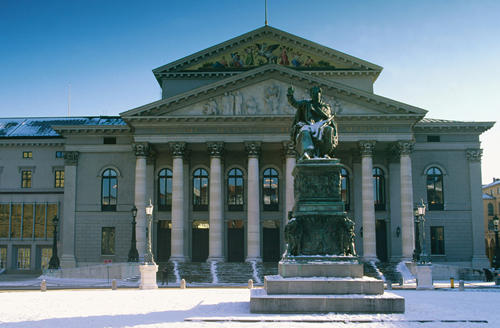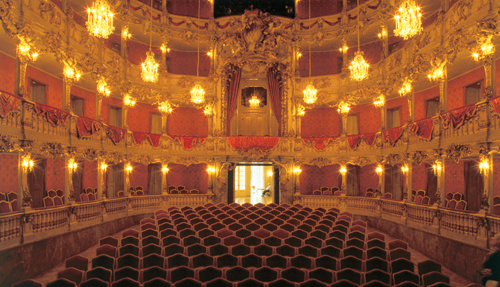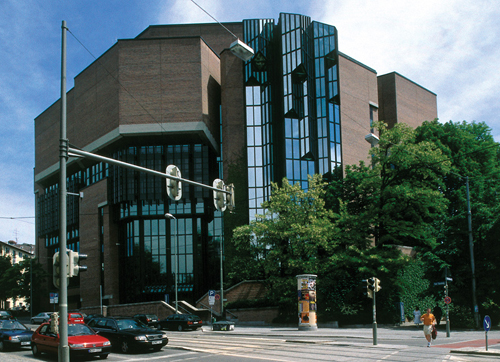|

|
Most theatres close at the start of the summer holidays (end of July). The new season usually begins at the end of September.
|
|
Bayerische Staatsoper Built
in 1811, the neo-Classical national theatre was reconstructed (1823–5)
after a fire. It grew into one of the most important music stages, and
premieres of Wagner operas were held here in the presence of Ludwig II.
Closed for many years after the end of World War II, the theatre
re-opened in 1963. Noted for its impressive repertoire, the theatre
boasts an auditorium with five balconies resplendent in royal gold and
purple. Bayerisches Staatsschauspiel In
1951, the Neues Residenztheater opened its doors next to the Opera
House. Stark on the outside, the interior is lavish and monumental
thanks to refurbishment in 1988–91. Artistic director Dieter Dorn
presents a wide range of dramatic works. The Theater im Haus der Kunst is also part of the Bayerische Schauspielhaus.

Bayerische Staatsoper
Cuvilliés-Theater Time
seems to have stood still in this breathtakingly beautiful Rococo
theatre. Furnishings and decor were packed away in crates for safe
storage during World War II. After the original building was destroyed
by bombing, the theatre was rebuilt, reopening in 1958. It is a stage
for performances by the Bayerische Staatstheater .

Cuvilliés-Theater
Münchner Kammerspiele Built
by Richard Riemerschmid in 1901 and now restored, this theatre became
the home of the Münchner Kammerspiele in 1926. Inside, Art Nouveau
rules, with intertwining ornamentation and dozens of lighting fixtures
in the shape of flower buds. During the 1920s, the Kammerspiele was
considered the most important stage outside Berlin and caused quite a
stir staging works by Bertolt Brecht and others. Even today, you are
sure to be treated to innovative theatre. Staatstheater am Gärtnerplatz Lovers
of traditionally staged operas, operettas, and musicals will feel right
at home in this intimate theatre. Built in 1865 as a bourgeois
equivalent to the royal theatre houses, it has remained a popular venue
to this day. Gasteig An
unwieldy brick structure on the outside, this theatre is a venue for
more than 1,700 events per year – from concerts by the Munich
Philharmonic to a film festival. Seating 2,500, the Philharmonie has
excellent acoustics. This large hall is complemented by other smaller
auditoriums.

Gasteig
Herkulessaal Perfect
for classical concerts, this vast hall in the Residenz, with over 1,200
seats, is popular with the Bayerischen Rundfunk Symphony Orchestra, the
Münchner Symphoniker, and the Münchner Kammerorchester, which stage
sell-out concerts here. Prinzregententheater Built
in 1901 as a Wagner festival theatre, the space, conceived as an
amphitheatre, is chiefly used as a performance venue for the Bayerische
Theaterakademie August Everding. Münchner Volkstheater What you experience here is by no means simple folk theatre but a sophisticated repertory of entertaining, popular plays. Deutsches Theater This
large theatre is the city’s main venue for international stars and
musicals. During Fasching (carnival), it is transformed into a
glittering ballroom.

|